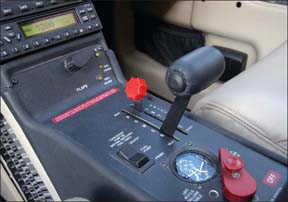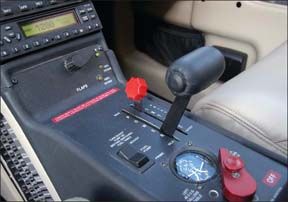
By Joseph E. (Jeb) Burnside
Old wives tales (OWTs) are rampant in general aviation, but they are perhaps most prevalent when it comes to engine management. Many of these hand-me-down procedures on how to operate a piston engine are often drawn from the WWII era, when teaching airmanship and combat skills took precedence over powerplant management. They also can be attributed to poor understanding of the elements of engine management among flight instructors and to flight school policies.
Regardless of the underlying reasons, the vast majority of GA pilots not only received little fact-based instruction in how to use their engine controls, but much of the training they did receive was wrong. In recent years, however, huge amounts of effort have gone into researching the best, most efficient and safest methods to manage the piston aircraft engine. The vast majority of this research has been conducted by the gurus at Ada, Okla.-based General Aviation Modifications, Inc. (GAMI), which markets a series of products enhancing personally flown airplanes. Most famous of these products is the GAMIjector line of balanced fuel injectors. But the gurus at GAMI and the affiliated Advanced Pilot Seminars (APS) have also re-written the book-literally-on how piston aircraft engines can and should be operated. Its not about leaving the red knob full forward, anymore.
Why Lean?
Indeed, why do we need to lean the mixture in the first place? Depending on the engine and its installation, we may not. Those few flying behind or between diesel engines, for example, or using an aircraft equipped with a full-authority digital engine control (FADEC) may not concern themselves with proper mixture leaning; the rest of us-yes, that means you-need to pay more attention.
The first and most obvious answer to the why lean? question is that we need to compensate for the less-dense air present at higher altitudes. In its full-rich position, the mixture control should be adjusted to supply at least enough fuel to supply the engine at full throttle at sea level on a standard day. As the airplane climbs, the air entering a non-turbocharged engine becomes less dense; to maintain maximum power, we need to reduce the amount of fuel to compensate.
Of course, reducing the amount of avgas we consume by leaning also enhances range, endurance and safety-the only time we can have too much fuel is when were on fire. But proper leaning can also improve performance and result in a cleaner, more-healthy engine. A prime example when leaning is beneficial is during ground operations. While taxiing with a properly configured engine at sea level, the power output is very low. With the mixture in its full-rich position, much more fuel is being mixed with the air entering the cylinders than is necessary. Since the
Leaning On The Ground
Proper leaning begins as soon as the engine is turning and you have a safe oil pressure indication. Most engines can benefit from ground leaning and, since the power output is so low-even during the runup, theres no way to hurt the engine.
Ever see an instructor and student run their engine up well beyond the mag-check rpm? They probably had one or more cylinders run rough during the mag check. With a slightly higher power setting and aggressive leaning, they were trying to burn off suspected lead or oil deposits from the spark plugs.Such deposits are the usual suspects, of course, but regular and aggresive ground leaning can help cure these symptoms and prevent the need for a high-power runup. Such a runup, by the way doesnt do the prop any good and-if prolonged-can unnecessarily heat up the engine since adequate cooling air simply isnt flowing through the cowling. Prevention is better than the cure.
How severely should you lean the engine on the ground? Until it almost quits. Youll know your ground-leaning procedure is appropriate when you forget to enrichen the mixture before setting takeoff power: The engine wont run smoothly or make its full takeoff rpm. Smoothly enrichen the mixture to full and off you go. Again, at the low power settings used in ground operations, theres no way to hurt the engine.
If your airplane is based and its fuel system/carburetor is setup for near-sea-level operations, and youre at a high-elevation airport, you must lean during ground operations as well as for takeoff. Ive found the best way to do this is to aggressively lean on the ground during taxi and runup, then enrichen the mixture-but not to full rich-for takeoff. Once takeoff power is set early in the ground roll, gently lean the mixture to either a fuel flow or-preferably-an EGT value approximating your full-power climb setting at that altitude. You do know what those values are, dont you?
Rich Of Peak EGT
Once airborne, you were probably taught to avoid leaning the mixture unless you were above 5000 feet msl. Even then-and presuming a fixed-pitch prop-you were probably taught to lean the mixture until you noticed a slight increase in rpm. These two truisms are probably the most prevelent OWTs out there on leaning your engine.
The reality is two-fold. First, unless you have accurate instrumentation measuring either EGT and/or fuel flow (see the sidebar above), there is no way to know whether this mixture setting is good for your engine or efficient. When flying with a fixed-pitch prop, it would be better to use that method and then enrichen the mixture a bit, back to the initial rpm. The reasons why are explained in the “The Red Box” sidebar.
Second, why the 5000-foot limitation? Theres no good reason, of course, except that FBOs probably want that limitation impressed upon renters to help prevent engine problems resulting from a lack of understanding and a lack of proper instrumentation.
There are, of course, ways to hurt an engine with the red knob. Generally speaking, leaning to within 75 or so degrees on the rich side of peak EGT is to be avoided at high (greater than 65 percent) power settings. An easy way to establish this mixture setting with a fixed-pitch prop is-you guessed it-leaning until you see an increase in rpm. Another easy way to do it-with either a fixed-ptch or constant-speed prop-is to follow the leaning instructions in most airplane manuals. The graphs above and on the opposite page depict whats going on in your engine as you lean through rich of peak (ROP), to peak and to lean of peak (LOP) EGT settings
Lean Of Peak EGT
There are engine gurus out there who just know that leaning past peak EGT will unconditionally damage your engine. Their knowledge flies in the face of years of sucessful LOP operations by the military and the airlines back in the day before the round, or radial, engine was replaced by turbines.
The reality-again demonstrated in the two graphs above, is that a so-called red box exists when leaning an engine-any engine-within which it is inadvisable to operate. The size of the red box-which results from the high internal cylinder pressures (ICPs) produced-depends on the power setting. At high power, the box is at its widest; it narrows as power is reduced.Generally, at power settings below 65 percent, the red box disappears and the engine can be leaned to whatever setting you desire.
One of the keys is knowing how much power your engine is producing. For turbocharged engines, thats relatively easy. For non-turbod engines, its less easy, but it can be simplified. If you always run an engine equipped with a constant-speed prop at full throttle and 2500 rpm, at any altitude above 9000 feet msl, you can put the mixture control anywhere you want it and not hurt the engine because youre not producing enough power to hurt anything.
Without starting a war over whether to run your engine on the rich or lean side of peak-there are good reasons for both-Ill simply say Ive been running my IO-520 lean of peak every chance I get. My CHTs are cool and my engine seems happy. I can live with the reduced power and airspeed, especially when I consider the additional range and reduced fuel burn. For me, its the way to go.
Putting It All Together
Theres no way to put into this small space all the things you need to know about how to lean your engine. Instead, Ive tried to touch on the basics, as well as why you may have been taught to lean your engine a certain way. One of the keys is understanding whats going on when you use the red knob and how to use it to achive your engine management goals.
The bottom line is that using the red knob correctly can save you money in fuel, fuel stops and in engine maintenance. Using it incorrecly-or not at all-can increase your operating expenses unnecessarily.
The best way I know to obtain the training and information necessary to use the red knob with confidence is to sign up for one of the courses given by Advanced Pilot Seminars. They recently put these online at <www.advancedpilot.com>. I went through the course a couple of years ago and highly recommend it.Youll definitely learn how to lean.
Also With This Article
“You Need Better Instrumentation”
“Charting Your Engine”
“The Red Box”




